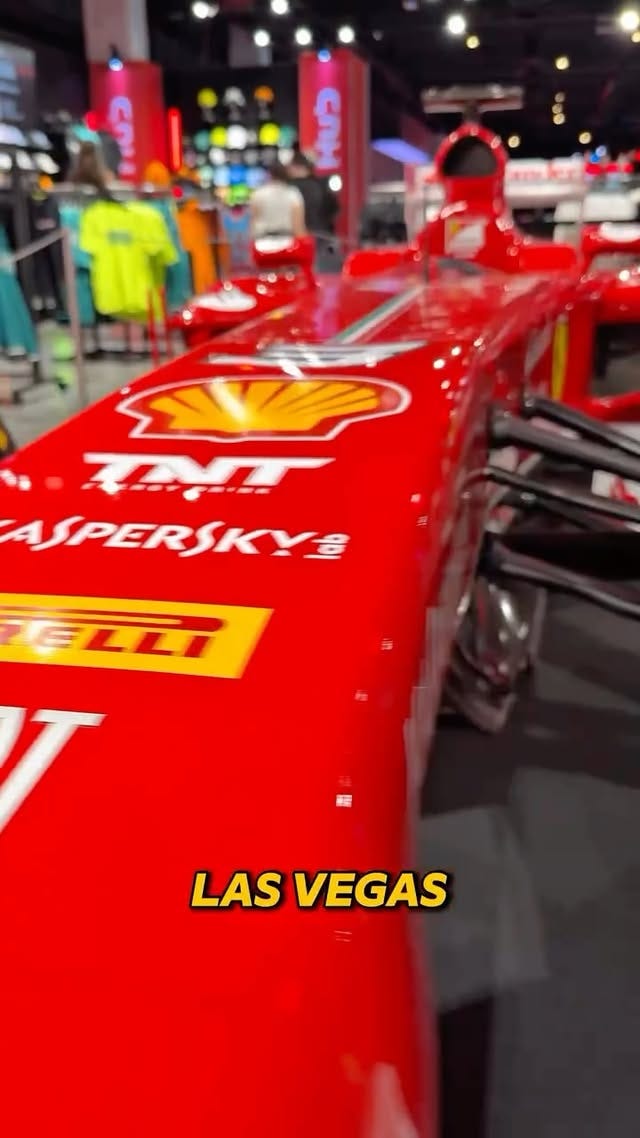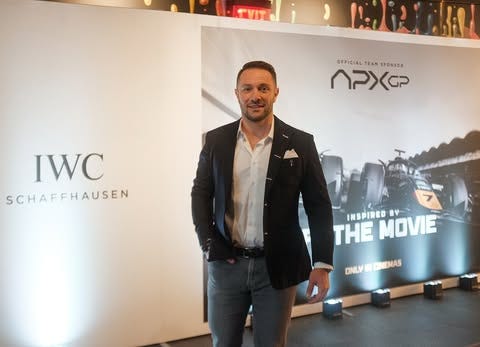LEGO just made Formula 1 history
How a 92-year-old toy company and 75-year-old racing series created marketing gold that appeals to both 8-year-olds and 80-year-olds
You are receiving this email because you subscribed to Business of Speed, the newsletter for those wanting to stay ahead on what’s happening behind the scenes. I’m Vincenzo Landino, a business, tech, and F1 commentator. I’ve spent the last ten years at the intersection of content, partnerships, and the business of motorsport. This newsletter is where I break down what’s working, what’s shifting, and what’s next without the PR gloss. Thank you for being here.
What’s Happening This Week
It’s Silverstone week, and that means a lot is happening. Here are the key points you need to know.
Nico Hulkenberg gets on his first podium in 239 starts, ending the longest wait in F1 history
Red Bull, McLaren, Sauber, Williams, and Haas to return to Goodwood Festival of Speed
For the first time, F1 podium finishers received trophies made entirely of LEGO bricks. And while it might sound like a publicity stunt, this partnership reveals something much bigger about where both brands are heading.
Seven LEGO master builders worked over 210 hours to create these one-of-a-kind trophies. Each piece perfectly replicates the historic Royal Automobile Club design, which has been synonymous with the British Grand Prix for decades. The company only made a handful of replicas for media partners and VIP guests, making these some of the most exclusive LEGO creations ever produced.
The timing wasn't coincidental either. This partnership celebrates F1's 75th anniversary at its birthplace, Silverstone, where the very first Formula 1 World Championship race took place in 1950.
Why LEGO chose F1 makes perfect business sense
The Danish toy company isn't just playing around with this collaboration. Formula 1's global audience of 1.5 billion viewers represents the exact demographic LEGO has been chasing for years. We're talking about affluent, detail-oriented consumers who appreciate precision engineering and aren't afraid to spend money on premium products.
LEGO has been aggressively expanding beyond children's toys, and the numbers prove it's working. Their adult-focused sets now generate over $1 billion annually, with Formula 1 being one of their fastest-growing categories. The company's Technic F1 car sets regularly sell out, and their Speed Champions line has become a collector's obsession.
What makes this partnership particularly brilliant is how naturally both brands align
F1's obsession with precision engineering mirrors LEGO's building philosophy perfectly. Both companies target consumers who obsess over details, whether it's a car's aerodynamics or the precise placement of every brick. The cross-promotional opportunities are endless across 24 race weekends, giving LEGO consistent exposure to its target market throughout the entire season.
More importantly, this creates authentic storytelling that resonates with collectors. These aren't just toys or trophies – they're pieces of racing history that happen to be made of interlocking plastic bricks.
The bigger picture here is fascinating.
This collaboration represents LEGO positioning itself as a luxury lifestyle brand while F1 continues to diversify its revenue streams beyond traditional sponsorships. We've seen F1 embrace everything from Netflix documentaries to Las Vegas spectacles, and now they're handing out toys as trophies.
However, what's truly smart about this move is that it works for multiple generations simultaneously. Kids see cool LEGO trophies and want the F1 sets. Adults see the craftsmanship and precision, viewing these as legitimate collector's items. Parents see an opportunity to bond with their children over both brands.
When a 92-year-old toy company and a 75-year-old racing series collaborate, the result is marketing gold that appeals to both 8-year-olds and 80-year-olds. That's the kind of cross-generational appeal that most brands spend millions trying to achieve.
This partnership demonstrates that the most successful collaborations occur when two brands share similar values and target audiences rather than merely seeking quick publicity. LEGO and F1 both celebrate precision, innovation, and the pursuit of perfection – values that translate directly into consumer loyalty and premium pricing power.
If you're tracking the business of motorsport, this is the moment to stay sharp. The politics are intensifying, the money is flowing, and the stakes are higher than ever.
Field Notes
Last weekend, I attended a screening of the F1 Movie with IWC and then jumped on a plane to Las Vegas after being invited to check out the Grand Prix Plaza.









